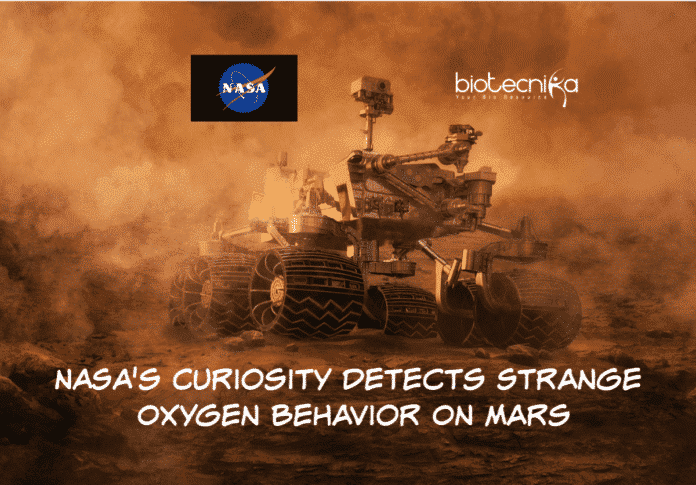Curiosity Detects Mars Oxygen-Behavior
The Curiosity Rover by NASA landed in Gale Crater in 2012. Since then, it has been the Martian surface beneath its wheels to learn more about the planet’s history. Along with the surface examination, Curiosity also collected data about the planet’s atmosphere.
Curiosity’s tunable laser spectrometer, called SAM, which stands for Sample Analysis at Mars, detected the most significant amount of methane ever measured during its mission.
SAM has also discovered that over time, oxygen behaves in a way that can’t be explained by any chemical process researchers currently understand.
Sam has revealed the following data about the Mars atmosphere- 95 percent of the atmosphere is carbon dioxide, followed by 2.6 percent molecular nitrogen, 1.9 percent argon, 0.16 percent oxygen, and 0.06 percent carbon monoxide.
Curiosity Detects Mars Oxygen-Behavior- What Is The Reason For Fluctuation?
Similar to Earth, Mars goes through its seasons; over a year, the air pressure fluctuates. This happens when the carbon dioxide gas freezes in winter at the poles, consequently lowering the air pressure. It rises again during spring & summer, redistributing across Mars as the carbon dioxide evaporates.
Surprisingly, the oxygen rose by a peak increase of 30 percent in the
spring and summer before dropping back to normal in the fall.Given the amount of time Curiosity has been monitoring the martin’s atmosphere, it was able to detect that this pattern repeated.
The variation suggests that oxygen is being created by something, then taken away.
Regarding methane, the June 2019 reading indicated 21 parts per billion units of methane by volume or ppbv.
So why is this unusually huge amount of methane so exciting? On Earth, microbial life is a crucial source of methane. NASA also warned that expectations of life should be managed since interactions between rocks & water can also create methane, and Mars has water as well as the abundance of rocks.
Curiosity Detects Mars Oxygen-Behavior- The Previous Findings
This is not the first time methane has been detected on Mars by Curiosity. Throughout its mission Curiosity has detected methane several times, and studies have been written about how the gas levels appear to rise & fall depending on the season. It can spike as much as 60 percent during the summer season.
The researchers wanted to share their findings in the hopes that experts studying the mars atmosphere may be able to help discover what process is creating these fluctuations in the atmosphere.
The study published in the Journal of Geophysical Research: Planets






























